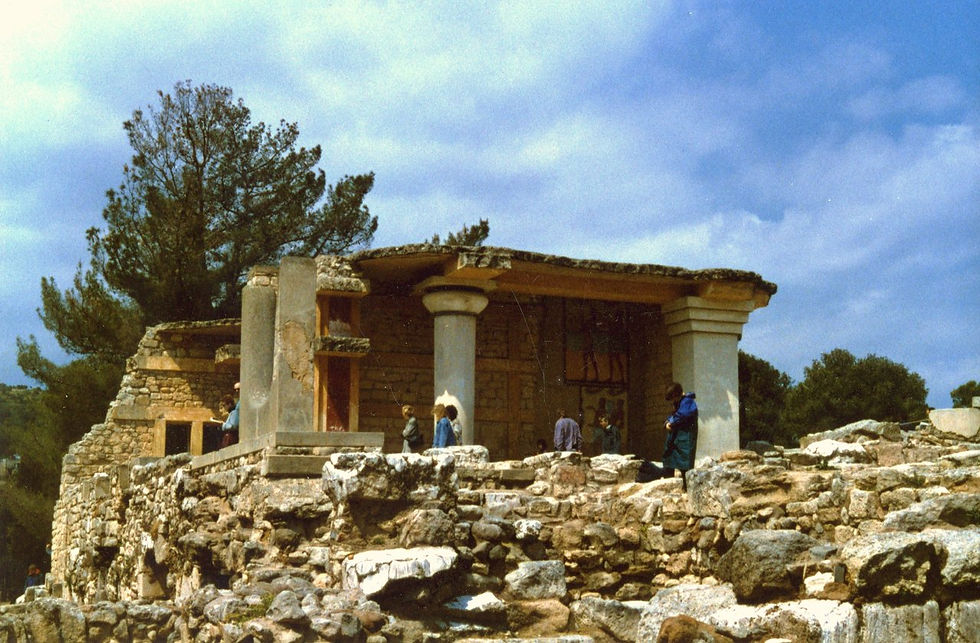The Lost City of Knossos
- drewlstone
- Oct 4, 2018
- 2 min read
Updated: Apr 18, 2023
The ancient city of Knossos, located on the Greek island of Crete, is a fascinating historical site that has captivated visitors for centuries. Discovered in the early 1900s by British archaeologist Sir Arthur Evans, the city of Knossos is believed to have been the capital of the Minoan civilization, which thrived on Crete during the Bronze Age. In this blog post, we will explore the wonders of the lost city of Knossos and the amazing discoveries that have been made about this ancient civilization.
The Minoan civilization is one of the oldest and most fascinating in the world. It flourished on Crete from around 3000 BCE until 1100 BCE and was a highly advanced society that was known for its sophisticated art, architecture, and writing. The Minoans were also skilled traders and sailors, and their influence was felt throughout the Mediterranean world.
One of the most impressive features of the city of Knossos is the palace complex, which covers an area of over 22,000 square meters. The palace was the center of the Minoan civilization, and it was a vast, sprawling complex that was home to the royal family, government officials, and other important figures. The palace was built around a large central courtyard, and it was surrounded by numerous rooms, storerooms, and workshops.
The palace complex at Knossos was also known for its stunning artwork and frescoes. Many of these frescoes have survived to this day, and they provide a fascinating insight into the life and culture of the Minoan civilization. One of the most famous frescoes is the Bull-Leaping Fresco, which depicts acrobats leaping over the backs of bulls. This fresco is thought to be a representation of a religious ritual that was practiced by the Minoans.
Another fascinating feature of the city of Knossos is the network of underground chambers and tunnels that lie beneath the palace complex. These tunnels were used for a variety of purposes, including storage, workshops, and even as a means of escape in times of danger. The tunnels were also used to collect rainwater and distribute it throughout the city, providing a reliable source of water for the Minoans.
The city of Knossos has also yielded a wealth of archaeological treasures that have shed new light on the Minoan civilization. Excavations at the site have uncovered thousands of artifacts, including pottery, weapons, and jewelry. The most important discovery, however, was the Linear B tablets, which are the earliest known form of Greek writing. These tablets provide a glimpse into the administrative and economic systems of the Minoan civilization, and they have helped to illuminate many aspects of Minoan life and culture.
In conclusion, the lost city of Knossos is an incredible historical site that is rich in culture and history. The city has provided a window into the ancient Minoan civilization and has yielded countless treasures that have helped to shed new light on this fascinating culture. If you have the opportunity to visit Crete, be sure to take the time to explore the wonders of Knossos and discover the amazing history and culture of this ancient civilization.





















Comments